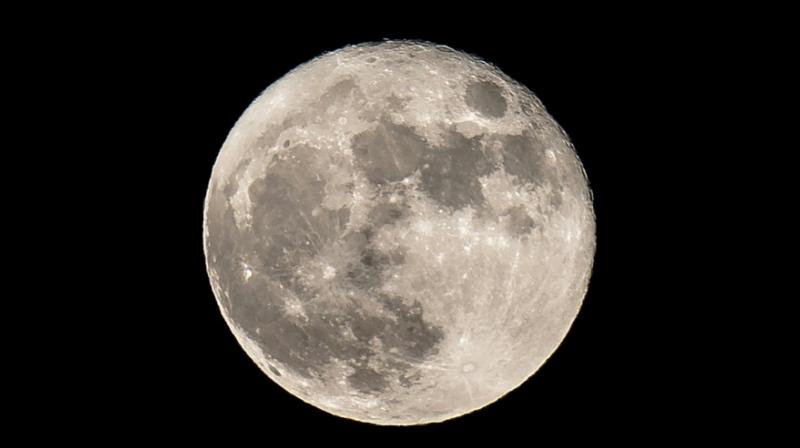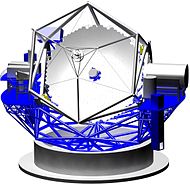1. NASA’s Orion Spacecraft Clears Safety Tests.
NASA’s Orion spacecraft – designed to take astronauts to deep space destinations such as the Moon and Mars – has successfully completed a series of tests for its critical safety systems.
Researchers tested the abort motor for Orion’s launch abort system on June 15, firing the 17-foot tall motor for five seconds.
The motor was fastened to a vertical test stand with its nozzles pointed toward the sky for the test. It produced enough thrust to lift 66 large SUVs off the ground and helps qualify the system for future missions with astronauts.
“The launch abort system is an important part of making sure our crew members stay safe on the launch pad and on their way to space,” said Robert Decoursey, manager for Orion’s launch abort system.
“It takes us another step closer to proving the safety of our spacecraft as we prepare for missions beyond the moon,” Decoursey said.
2. China planning to send mini-ecosystems to Moon.

In a first, China is planning to send mini-ecosystems – containing potato seeds and silkworm eggs – to the Moon next year, in an attempt to study how the organisms develop on the lunar surface.
The 3-kilogramme mini-ecosystem, developed by research teams led by Chongqing University in China, will be sent to the Moon by the Chang’e 4 scheduled to launch in 2018, authorities announced at the Global Space Exploration Conference.
An 18-centimetre-tall cylinder will carry potato seeds and silkworm eggs to be incubated.
The silkworms will hatch and create carbon dioxide, while the potato plants will generate oxygen, Zhang Yuanxun, who designed the ecosystem, was quoted as saying by ‘Global Times’.
3. Mobile App “Celebrating Yoga” Launched.

Minister for Science & Technology Dr. Harshvardhan has launched a Mobile App “Celebrating Yoga”. The Mobile App has been developed by Department of Science & Technology, Ministry of Science & Technology on the occasion of International Yoga Day 2017.
The aim of the app is to popularise Yoga and encourage people to practice yoga for a scientifically healthy living.
In 2015, the Department of Science & Technology (DST) had also launched a research programme “Science and Technology of Yoga and Meditation (SATYAM)” under its Cognitive Science Research Initiative (CSRI).
4. ISRO’s Mars Orbiter Mission completes 1000 Earth Days in Orbit.

The country’s low-cost Mars spacecraft completed 1,000 Earth days in its orbit on Monday, well beyond its designed mission life of six months or 180 days.
“The Mars Orbiter Mission (MOM) completes 1,000 earth days in its orbit, today (19 June 2017) well beyond its designed mission life of six months,” the Indian Space Research Organisation (ISRO) said.
It said 1,000 earth days correspond to 973.24 Mars Sols (Martian Solar day) and the MOM completed 388 orbits. The satellite is in good health and continues to work as expected, it said, adding that scientific analysis of the data received from the spacecraft is in progress.
India had on 24 September 2014 successfully placed the spacecraft in the orbit around the Mars in its very first attempt, joining an elite club of countries with expertise in space technology. The ISRO had launched the spacecraft on its nine-month- long odyssey on a homegrown PSLV rocket from Sriharikota in Andhra Pradesh on 5 November 2013 and it had escaped the Earth’s gravitational field on 1 December 2013.
Citing surplus fuel as the reason, the ISRO had in March 2015 first announced that the spacecraft’s life was extended by another six months. Later in June 2015, its chairman A.S. Kiran Kumar had said it has enough fuel for it to last “many years”.
The Rs450-crore MOM was launched to study the Martian surface and mineral composition, and scan its atmosphere for methane, an indicator of life on the Red Planet. The spacecraft has five scientific instruments—Lyman Alpha Photometer (LAP), Methane Sensor for Mars (MSM), Mars Exospheric Neutral Composition Analyser (MENCA), Mars Colour Camera (MCC) and Thermal Infrared Imaging Spectrometer (TIS).
The Mars Colour Camera, one of the scientific payloads onboard MOM, has produced more than 715 images so far, the ISRO said. During the mission, the spacecraft has gone through a communication ‘blackout’ as a result of solar conjunction from 2 June 2015 to 2 July 2015.
It experienced the ‘whiteout’ geometry (when the Earth is between the Sun and the Mars and too much solar radiation may make it impossible to communicate with the Earth) during 18 May to 30 May 2016. An orbital manoeuvre was also performed on the MOM spacecraft to avoid the impending long eclipse duration for the satellite.
5. Energy Conservation Building Code 2017 Launched.

The Energy Conservation Building Code 2017 (ECBC 2017) has been developed by Ministry of Power and Bureau of Energy Efficiency (BEE) with technical support from the United States Agency for International Development (USAID) under the U.S.-India bilateral Partnership to Advance Clean Energy – Deployment Technical Assistance (PACE-D TA) Program.
The code provides present as well as futuristic advancements in building technology to cut down building energy consumption and promote low-carbon growth.
The code sets clear criteria for builders, designers and architects to integrate renewable energy sources in building design through the inclusion of passive design strategies.
ECBC 2017 aims to optimise energy savings with the comfort levels for occupants. The code aims to achieve energy neutrality in commercial buildings.
Apart from the current and futuristic advancements in building technology, the new code takes into account market changes, and energy demand scenario of the country.
The code has been set in such a way that it will set a benchmark for Indian buildings to be amongst some of the most efficient globally. To be ECBC-compliant, the new buildings should be able to demonstrate minimum energy savings of 25%. Energy savings of 35% and 50% will enable the buildings to achieve higher grades like ECBC Plus or Super ECBC status respectively.
The adoption of ECBC 2017 is expected to achieve a 50% reduction in energy use by 2030 which will translate into energy savings of about 300 Billion Units by 2030.
It will result in expenditure savings of Rs 35,000 crore and reduction of 250 million tonnes of CO2.
6.ISRO’s PSLV-C38 carrying 31 satellites, lifts off from Sriharikota.

Indian Space Research Organisation (ISRO) workhorse rocket Polar Satellite Launch Vehicle (PSLV-38) blasted off from the spaceport carrying the Cartosat-2 series satellite a dedicated satellite for the defense forces along with 30 co-passenger satellites.
The 30 satellites will together weigh 243 kg and the total weight of all the 31 satellites, including Cartosat, is about 955 kilograms.
The co-passenger satellites comprise 29 nano satellites from 14 countries namely Austria, Belgium, Britain, Chile, Czech Republic, Finland, France, Germany, Italy, Japan, Latvia, Lithuania, Slovakia, and the US as well as one Indian nanosatellite.
7. India’s Contribution to Thirty Metre Telescope (TMT) Project.

Thirty Metre Telescope (TMT) is the world’s biggest telescope which would facilitate astronomers to observe the intricacies of the universe from earth.
Thirty Metre Telescope (TMT) is a multi- million dollar project being developed by an international consortium of Five countries including India. The other four countries are Canada, China, Japan and the U.S. In July 2013, five countries participating in the project had inked Master Partnership Agreement (MPA) for the construction of the Thirty Meter Telescope (TMT).
The ambitious next-generation telescope would be built at a cost of USD 1.47 billion. India will spend Rs 1,300 crore on the project. India’s contribution to the project will be more in terms of hardware than money.
The telescope which was expected to be started at Mauna Kea, Hawaii was stalled following protests by locals. The project site is still being finalised by the consortium of countries involved in the project.
Hanle in Ladakh is one among the new sites that are being explored for the construction of the telescope. The telescope is expected to be ready by 2020. The telescope when ready would offer astronomers with unparalleled power to observe the universe.
8. NASA launches World’s Lightest Satellite designed by Indian Student.

NASA has launched world’s lightest satellite weighing only 64 grams designed by 18-year-old boy Rifath Sharook from Tamil Nadu. The tiny satellite has been named as KalamSat after the former President APJ Abdul Kalam.
The tiny satellite was launched into space on a sounding rocket from NASA’s facility in Wallops Island.
KalamSat is a 3-D printed satellite. This is the first time that 3-D printing technology is used to make satellites. To participate in NASA’s contest Cubes in Space in partnership with the global education company, I Doodle Learning, Sharook and his team had designed a 1 kg CubeSat.
But as the CubSat was costly the group made a smaller version for the contest and came up with ‘KalamSat’. By using the concept called BalloonSats, the group created a Near Space Launch Vehicle (NSLV) to launch KalamSat.
BalloonSats are designed to carry lightweight experiments into near-space. The tiny satellite weighs only 64 grams which is lighter than a smartphone. The satellite has been made of reinforced carbon fibre polymer.